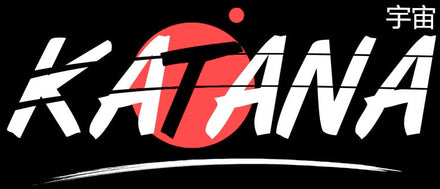The katana, the iconic sword of the samurai, is much more than just a weapon: it embodies the art, discipline, and philosophy of Japanese martial arts. Mastering how to grip a katana properly is an essential step for anyone looking to practice iaido, kenjutsu, or simply handle this sword with respect and precision. In this article, we will explore in detail the best way to hold a katana, giving you the keys to smooth and efficient handling. Whether you are a beginner or a martial arts enthusiast, these tips will help you progress quickly while adopting a stance worthy of the greatest warriors.
Understanding the components of a katana
Before learning how to wield a katana correctly, it is essential to understand its different parts. The blade, known as the Ha, is the sharp, curved part, forged with precision through an extensive crafting process where master swordsmiths apply ancestral techniques. Just below it is the Tsuba, or guard, which not only protects the hand but also balances the sword. The Tsuba can be simple or intricately decorated with traditional motifs.
Next, we have the Tsuka, or handle, which is wrapped in a durable braiding (Tsuka-ito) to ensure a firm grip. The internal structure of the handle is usually made of wood and covered with ray skin (Samegawa) to improve adhesion. Finally, when the katana is not in use, it rests in its Saya, a scabbard traditionally made of lacquered wood. Some Saya also feature a Sageo, a cord used to attach the scabbard to the belt.
The basic stance (Kamae)

Adopting the correct stance is fundamental. A stable position allows better control of the katana and ensures smooth execution of techniques. The most common stance is Seigan no Kamae, where the katana is held in front of the opponent with the blade pointed slightly upward. This neutral guard position is ideal for anticipating movements and reacting quickly.
It is important to avoid excessive tension in the shoulders and maintain a natural body alignment. A balanced weight distribution between the legs allows for effective reactions to an opponent’s movements.
Other stances include Jodan no Kamae, where the katana is raised above the head for a powerful attack, and Gedan no Kamae, where the blade is pointed downward, a stance used to deceive opponents and strike suddenly. Each stance offers strategic advantages depending on the situation and must be mastered accordingly.
Proper grip technique for the katana
Holding the katana correctly is essential for ensuring precision and effectiveness. Your dominant hand should be placed just below the guard, while your non-dominant hand should grip the lower part of the handle. This positioning creates an optimal leverage effect, facilitating precise cuts while reducing muscle fatigue.
It is crucial to maintain a firm but not rigid grip. Imagine holding a small bird: firm enough so it does not escape, but gentle enough not to crush it. Proper wrist alignment with the blade ensures fluid and natural movements. A useful exercise is to practice movements slowly, controlling each step of the handling to feel how your grip influences the trajectory of the blade.
Basic techniques with the katana

Drawing a katana smoothly is a fundamental skill. The technique known as Nukitsuke involves extracting the blade from the Saya in one fluid and rapid motion while simultaneously executing a cut. This requires coordination between both hands and mastery of movement.
The fundamental cutting techniques, called Suburi, include several essential strikes:
- Shomen Uchi: A vertical downward cut.
- Kesa Giri: A diagonal cut, one of the most frequently used techniques.
- Yoko Giri: A fast and decisive horizontal cut.
Each movement should be performed with precision and fluidity while maintaining a stable stance. Regular practice improves execution speed and mastery of attack angles.
Exercises to improve your grip
Repetition is the key to strengthening technique. Practicing Kata, or traditional sequences, helps integrate movements naturally and improve execution fluidity. These can be practiced alone or in simulated combat against an imaginary opponent.
Another effective exercise is Suburi, where cutting motions are repeated continuously while maintaining control of trajectory and power. Additionally, strengthening the forearm and wrist muscles will improve precision and endurance. Good muscle endurance is crucial for maintaining smooth handling without losing strength over extended training sessions.
Toward mastery of the katana
Holding a katana correctly is the first step toward advanced mastery of Japanese martial arts. Stance, grip, and basic techniques are essential for ensuring effective progression. With practice and patience, you will refine your sword handling skills and discover the rich traditions of Japanese swordsmanship.
Whether you are passionate about samurai history or interested in martial arts, learning to wield a katana with respect and precision is an enriching experience. So, take up your katana, practice diligently, and immerse yourself in this fascinating art!














